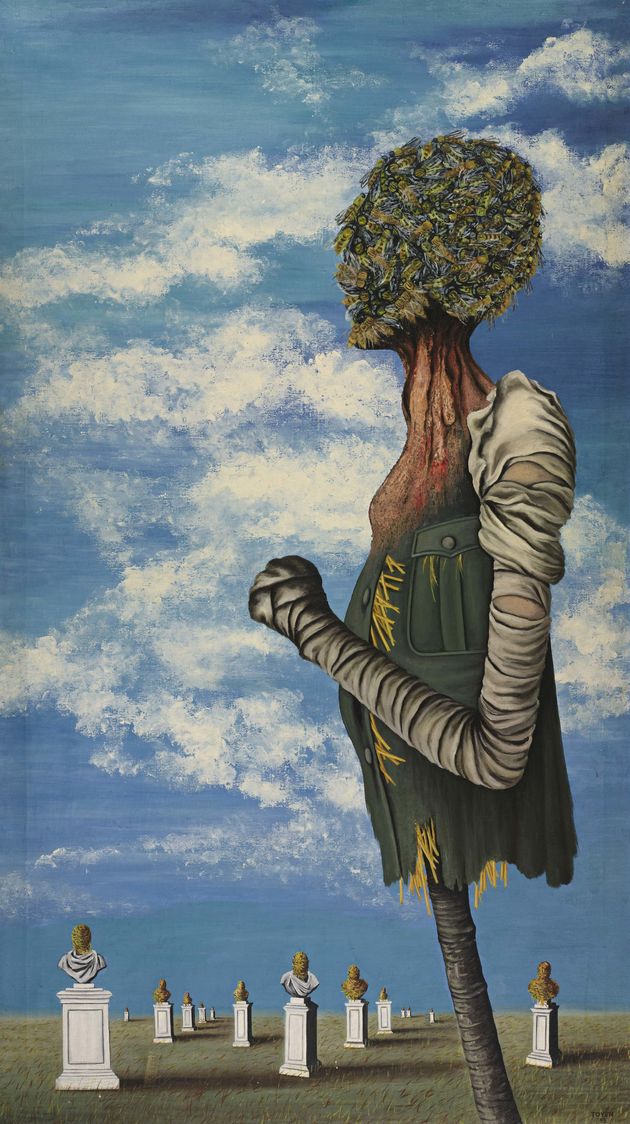by DAVID WALSH
 “La Guerre” by Toyen (Marie ?ermínová), 1945. Oil on canvas. PAINTING/Huffington Post
“La Guerre” by Toyen (Marie ?ermínová), 1945. Oil on canvas. PAINTING/Huffington Post
“All the terrifying things all really happened”
Toyen, the name adopted by Marie Cermínová (1902-1980), was a Czech artist associated with surrealism. André Breton, in a 1953 monograph, referred to Czech history in the 20th century as “swamped by catastrophe” and noted that there was “no nobler, no more punctual reply” to this history “than the work of Toyen, as radiant as her heart, albeit tinged with dark foreboding.”
Czech director Jan Nemec, who died in March 2016, made a film about Toyen in 2005, which is now available from Facets Multimedia. The work, Toyen, is intriguing and sometimes deeply moving—although the life and work of the artist, in many ways, is even more remarkable.
Nemec’s film treats, above all, the period in World War II during which Toyen hid her Jewish lover, the poet, photographer and object-maker Jindrich Heisler, who refused to wear a yellow star, from the Gestapo. For most of 1941 to 1945 they lived in her small apartment in Prague in semi-darkness, to attract as little attention as possible. (“Because we lived in darkness,” the female narrator later explains, “Jindrich loved light.”) Heisler also slept in the bathtub, to minimize any noise.
The film is an evocation, poetic, impressionistic, rather than a conventional chronicle. It combines the words of Toyen, Heisler and Toyen’s longtime collaborator, painter and poet Jindrich Štyrský, as well as Nemec’s narration, and complex images, often several layers deep, along with dramatic sequences with actress Zuzana Stivínová as Toyen and Jan Budar as Heisler.
In addition, we see footage of Joseph Goebbels in Prague in 1940, as well as shots of Reinhard Heydrich, the bloodthirsty, high-ranking Nazi official assassinated in the Czech capital in May 1942. In retaliation for Heydrich’s killing, German forces murdered every male over 15 in the village of Lidice (whose residents the Nazis believed, wrongly, had aided the assassins) and sent its women and children to concentration camps. Toyen painted one of the children’s faces. The children, says the narrator, “vanished. Their faces vanished.” We hear machine guns.
Meanwhile, the Gestapo raids the apartment building where Toyen lives. “We stood ready for death.” But the apartment is not entered.
World Socialist Web Site for more
